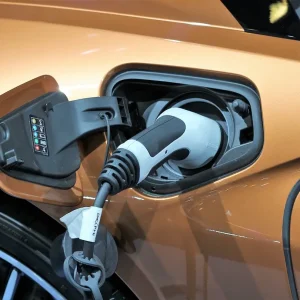The UK’s ban, from 2030, on the sale of new petrol and diesel cars and vans is driving increased demand for electric vehicles (EVs) for both private and commercial users. As a result, many fleets are beginning to make the switch – with EVs in fleets predicted to grow by a factor of eight or more by 2030.
However, despite rising adoption of EVs, there’s still a myriad of myths and misinformation around them, which are impacting when and if fleets should make the switch. Perceived challenges remain around issues such as range, charging anxiety and even rumours of a tax on tyres. But what do each of these really mean for decision-makers in this area?
“I won’t be able to travel long distances due to the range”
When considering the significant improvements to battery technology and range over the last 10 years, coupled with the growth in the charging infrastructure, today’s EVs are just as suitable for long-distance journeys as they are for short-distance journeys.
While range varies across all the different models, the average real-life range of an EV today is often well over 200 miles, with many family cars capable of doing 250-300 miles or more on a single charge. This is well above the average UK car journey, which sits at just 8.4 miles. For most drivers, this also means it’s not necessary to charge EVs every day or even, in fact every week. While much longer journeys may require drivers to stop to charge, these are typically rare occasions for most, which can be planned for in advance.
“EVs produce a higher level of particulate emissions”
Although EVs have no tailpipe exhaust emissions, recently, there have been claims that particulate emissions (small particles released from tyre/brake wear, which contribute to air pollution) are higher for EVs than internal combustion engine (ICE) vehicles, due to their increased weight and tyre size. There were also rumours of a so-called ‘tyre tax’ being introduced to tackle this. However, drivers can rest assured, as there’s nothing to suggest that the government is looking to introduce a ‘tyre tax’, which would go against the UK’s net zero goals.
Concerns around particulate emissions resulting from brake wear, due to brake pads pressing against brake discs, are also somewhat over-exaggerated. In fact, in an EV, the majority of braking can be done through regenerative braking, where motors act in reverse to slow the vehicle. This means brake wear is actually notably less than on an ICE vehicle, and the use of brakes is so reduced that we are already starting to see a reintroduction of the drum brake, which has the potential to further reduce particulate emissions.
“Charging is a hassle”
Filling up at a traditional fuel station is very familiar for many, and it’s largely a standard experience each time. On the other hand, EV charging can take many different forms, which can make it appear more complicated and – for some – a real hassle.
However, if you’re fortunate enough to be able to charge at home or workplace then charging, for the majority of drivers’ daily mileage needs is, in many ways, easier than filling up at a fuel station – as you can charge the car while you’re at work or overnight.
For drivers who have to rely on the public charging network for routine charging, it can be more difficult. However, public charging infrastructure is constantly growing and improving. Recent reports highlight a 33% year-on-year growth for the public charging network, with thousands of chargepoints being installed every year across the UK on streets, in car parks, at supermarkets and retail parks and pubs and hotels.
Charging your EV on those occasional longer journeys, which are beyond the maximum range of the car, does require a small amount of planning. However, stopping to top up your battery using rapid chargepoints can be built into your natural journey breaks, getting you back on the road sooner with minimal disruption.
The rapid charging network also continues to grow, and there’s now a requirement for contactless payment facilities at each chargepoint, meaning you no longer need multiple RFID cards or apps to recharge.
“Electric vehicles are boring to drive”
Perhaps due to the lack of engine noise and gear box, there’s a common belief that EVs can be boring to drive. While taste in vehicles is, of course, subjective, there are many EV drivers who would not go back to an ICE vehicle, as they have found EVs to be great fun to drive.
Firstly, EVs are quick and offer great acceleration thanks to the instant maximum torque and readily available power, which isn’t possible in an ICE. This makes them particularly fun to drive in towns and very useful when overtaking.
With no engine noise or vibration throughout the vehicle, EVs are also quiet, providing a much smoother driving experience, which can feel as though you are gliding through traffic. This also helps to make longer journeys more comfortable and less stressful.
With the EV’s heavy battery pack positioned in the floor, they also have a very low centre of gravity, which often gives much greater handling performance than equivalent ICE vehicles, again making them more fun to drive.
David Watts is fleet product manager for electric vehicles, Volkswagen Financial Services Fleet





